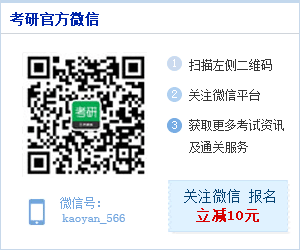At 18, Ashanthi DeSilva of suburban Cleveland is a living symbol of one of the great intellectual achievements of the 20th century. Born with an extremely rare and usually fatal disorder that left her without a functioning immune system (the “bubble-boy disease,” named after an earlier victim who was kept alive for years in a sterile plastic tent), she was treated beginning in 1990 with a revolutionary new therapy that sought to correct the defect at its very source, in the genes of her white blood cells. It worked. Although her last gene-therapy treatment was in 1992, she is completely healthy with normal immune function, according to one of the doctors who treated her, W. French Anderson of the University of Southern California. Researchers have long dreamed of treating diseases from hemophilia to cancer by replacing mutant genes with normal ones. And the dreaming may continue for decades more. “There will be a gene-based treatment for essentially every disease,” Anderson says, “within 50 years.”
It's not entirely clear why medicine has been so slow to build on Anderson's early success. The National Institutes of Health budget office estimates it will spend $432 million on gene-therapy research in 2005, and there is no shortage of promising leads. The therapeutic genes are usually delivered through viruses that don't cause human disease. “The virus is sort of like a Trojan horse,” says Ronald Crystal of New York Presbyterian/Weill Cornell Medical College. “The cargo is the gene.”
At the University of Pennsylvania's Abramson Cancer Center, immunologist Carl June recently treated HIV patients with a gene intended to help their cells resist the infection. At Cornell University, researchers are pursuing gene-based therapies for Parkinson's disease and a rare hereditary disorder that destroys children's brain cells. At Stanford University and the Children's Hospital of Philadelphia, researchers are trying to figure out how to help patients with hemophilia who today must inject themselves with expensive clotting drugs for life. Animal experiments have shown great promise.
But somehow, things get lost in the translation from laboratory to patient. In human trials of the hemophilia treatment, patients show a response at first, but it fades over time. And the field has still not recovered from the setback it suffered in 1999, when Jesse Gelsinger, an 18-year-old with a rare metabolic disorder, died after receiving an experimental gene therapy at the University of Pennsylvania. Some experts worry that the field will be tarnished further if the next people to benefit are not patients but athletes seeking an edge. This summer, researchers at the Salk Institute in San Diego said they had created a “marathon mouse” by implanting a gene that enhances running ability; already, officials at the World Anti-Doping Agency are preparing to test athletes for signs of “gene doping.” But the principle is the same, whether you're trying to help a healthy runner run faster or allow a muscular-dystrophy patient to walk. “Everybody recognizes that gene therapy is a very good idea,” says Crystal. “And eventually it's going to work.”
注(1):本文选自Newsweek;12/6/2004, p55-55, 2/3p, 1c;
注(2):本文习题命题模仿对象: 第1、2题分别模仿2003年真题text1的第2题和第1题;第3、4题分别模仿2004年真题text1的第5 题和第3题;第5题模仿2002年真题text3的第5题;
1. The case of Ashanthi Desilva is mentioned in the text to ____________.
[A] show the promise of gene-therapy
[B] give an example of modern treatment for fatal diseases
[C] introduce the achievement of Anderson and his team
[D] explain how gene-based treatment works
2. Anderson‘s early success has ________________.
[A] greatly speeded the development of medicine
[B] brought no immediate progress in the research of gene-therapy
[C] promised a cure to every disease
[D] made him a national hero
3. Which of the following is true according to the text?
[A] Ashanthi needs to receive gene-therapy treatment constantly.
[B] Despite the huge funding, gene researches have shown few promises.
[C] Therapeutic genes are carried by harmless viruses.
[D] Gene-doping is encouraged by world agencies to help athletes get better scores.
4. The word “tarnish” (line 5, paragraph 4) most probably means ____________.
[A] affect
[B] warn
[C] trouble
[D] stain
5. From the text we can see that the author seems ___________.
[A] optimistic
[B] pessimistic
[C] troubled
[D] uncertain
答案:A B C D A
编辑推荐:
·2021年考研真题及答案解析专题 (2020-12-27)
·2021年考研真题及答案解析专题 (2020-12-27)
·2021考研英语完型填空暑期练习题及答案汇总 (2020-6-24 19:35:21)
·2021考研英语完型填空暑期练习题及答案(6) (2020-6-24 19:34:08)
·2021考研英语完型填空暑期练习题及答案(5) (2020-6-24 19:33:05)
·免费真题 ·模考试题


- 1
- 2
- 3
- 4
- 5
- 6
- 7
- 8
- 9
- 10
| · | 2022考研复试联系导师有哪些注意事 | 04-28 |
| · | 2022考研复试面试常见问题 | 04-28 |
| · | 2022年考研复试面试回答提问方法有 | 04-28 |
| · | 2022考研复试怎么缓解缓解焦虑心态 | 04-27 |
| · | 2022年考研复试的诀窍介绍 | 04-27 |
| · | 2022年考研复试英语如何准备 | 04-26 |
| · | 2022年考研复试英语口语常见句式 | 04-26 |
| · | 2022年考研复试的四个细节 | 04-26 |
| · | 2022考研复试准备:与导师及时交流 | 04-26 |
| · | 2022考研复试面试的综合技巧 | 04-26 |

实用文档 | 入党资料 | 入党申请书 | 入党志愿书 | 个人自传 | 转正申请书 | 思想汇报 | 个人简历 | 简历模板 | 简历封面 | 工作计划 | 工作总结 | 自我评测
个性评测 | 社交评测 | 事业评测 | 运势评测 | 报告 | 实习报告 | 工作总结 | 社会实践 | 心得体会 | 述职报告 | 调查报告 | 辞职报告
法律文书 | 合同范本 | 演讲范文 | 更多>>
英语学习 | 听力口语 | 阅读写作 | 翻译文化 | 趣味英语 | 学习方法 | 英文经典歌曲 | 每日课堂 | 空中英语 | 少儿英语 | 影视英语 | 英文歌曲 | 更多>>
作文大全 | 作文 | 小学 | 初中 | 高中 | 话题作文 | 考研 | 四六级 趣味作文 | 体裁作文 | 记叙文 | 议论文 说明文 | 应用文 | 读后感 | 作文素材 | 名言警句
优美段落 | 哲理故事 | 诗词赏析 | 成语知识 | 技巧 | 写作指导 | 作文点评 | 佳文赏析 | 写作基础 | 话题演练 | 作文教学 | 更多>>


